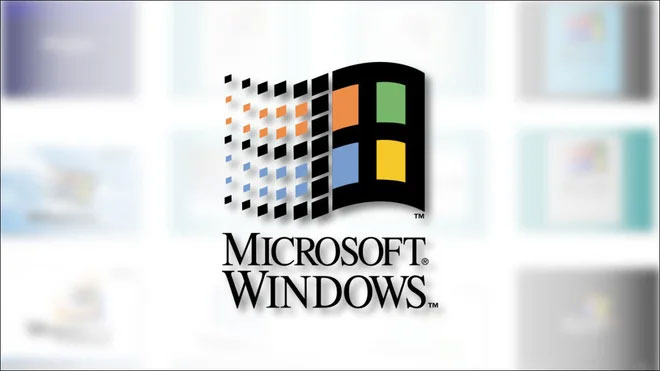The origin of the name of the Windows operating system
A Microsoft marketing leader chose "Windows" as the name of the computer operating system because the word was used frequently in the early days of the graphical interface.
With the development of modern technology, computers appear popular in daily life, Microsoft Windows has become a familiar name. Most of us have used, or at least heard of, this operating system.
Have you ever wondered: Why is the name of a computer operating system "windows"? The Howtogeek page says that the origin of the Windows name dates back to about 40 years ago.
Windows predecessors
In 1981, Microsoft began to develop the rudimentary structure, the premise of later Windows features. Originally, the program was named Interface Manager. It's basically a graphical interface that works on top of the MS-DOS operating system.

Microsoft has chosen Windows as the name of the program that manages the graphical interface for multitasking.
Users can control intuitively with a computer mouse, instead of operating entirely on the command line. It also supports multitasking by simultaneously displaying different applications in each box, located in each area of the screen. This design was pioneered by Xerox PARC on the Alto and Star computers, then improved by Apple.
At that time, the personal computer industry began to popularize the construction of multi-tasking graphical interfaces. The boxes of programs displayed on the screen are called "windows", and the software that manages them is called "windowing systems".
In the early 1980s, there were many vendors of this kind of software for personal computers, including IBM with TopView, Digital Research with GEM, and VisiCorp with Visi On. Microsoft's Interface Manager is also one of them.
Windows is born
In 1982, Microsoft hired a Vice President of Marketing named Rowland Hanson. He used to be a veteran figure in the cosmetics industry. Hanson brought a new perspective, helping to shape the company's brand by naming Microsoft before products, such as Microsoft Word and Microsoft Excel.

The box contains a disc containing the operating system Windows 1.01, released in 1985.
While researching a new name for Interface Manager, Hanson read articles about the wave of multitasking systems on personal computers and looked for what they had in common. He noticed that the term "windows" was used a lot when talking about application and program management.
So he chose Windows as the new name for Microsoft's computer operating system. Every time someone mentions a multitasking graphical interface system with application windows, they are inadvertently promoting Windows.
Finally Bill Gates decided to develop Interface Manager to become Windows. From there, Microsoft Windows was born and exists to this day.
The Redmond giant introduced Windows on November 10, 1983 — before the product was ready to ship — to attract hardware and software vendors, who were also working on a number of management systems. different interfaces.
When Windows 1.01 came out in 1985, it wasn't a groundbreaking product, but over time the software slowly evolved into an operating system independent of MS-DOS.
Today, Microsoft Windows has become a giant brand. This operating system brings billions of dollars to the parent corporation and will continue to be a key product in the coming time.
- The market share for EeePC is higher than the Windows operating system
- 10 things you should know about Windows 10
- Things on Windows 10 make users disappointed
- Why does Microsoft name the operating system Windows?
- New error found in Microsoft Windows operating system
- Vista is too expensive compared to Windows XP
- 10 reasons to install Windows Server 2008
- Use the font of Windows Vista without installing the operating system
- 8 security features of Windows operating system
- Learn Control Panel in Win. XP
- Samsung launched a hybrid hard drive for Windows Vista
- Windows operating system for ... robots?
 What is the Snapdragon SiP chip?
What is the Snapdragon SiP chip? How to create a yellow circle around the mouse cursor on Windows
How to create a yellow circle around the mouse cursor on Windows Edit the Boot.ini file in Windows XP
Edit the Boot.ini file in Windows XP 3 ways to restart the remote computer via the Internet
3 ways to restart the remote computer via the Internet